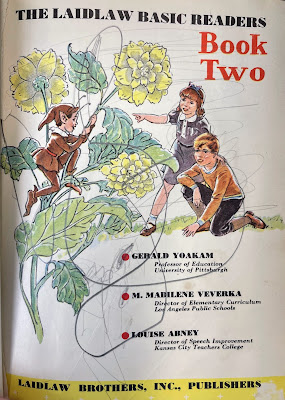That title is excellent clickbait, isn't it?
Come with me now back to Alabama in the summer of 1959. Our scene is set in Rabbittown, a community five miles northwest of White Plains, a small unincorporated area in Calhoun County about 15 miles northeast of Anniston. In that place Viola V. Hyatt and her elderly parents lived in an old farmhouse. Two men, Lee Andrew Harper (48) and his brother Emmett Harper (56) occupied a small trailer behind the house. Lee worked at the U.S. Army Depot at Bynum near Anniston; Emmett was unemployed at the time.
On July 17 after her confession, Viola was arrested and charged with first degree murder of the two men. Now Viola didn't simply murder the pair; she proved herself worthy of joining the company of "mad dog" killers everywhere. First, she used a shotgun and blasted both men in the face in their trailer. State toxicologist Robert Johnston declared those shots as the cause of death. Then she dismembered the bodies with an ax and distributed the pieces around two counties.
The men had not been seen after June 27. On June 28 the first torso was found near an abandoned house in Attalla in Etowah County. The second was discovered the following day 11 miles away in Whitney Junction in northwest St. Clair County where U.S. highways 11 and 231 cross. Despite the facial injuries sketches were made of what the men may have looked like and distributed to Alabama newspapers. After almost a month a tip led investigators to the farm where Viola Hyatt lived.
Viola, her parents Mr. and Mrs. M.D. Hyatt and a former boyfriend Dewey Carroll were questioned over two days while investigators searched the farm and gathered evidence from the trailer and men's car. At first Viola told a story about taking the men to the bus station in Oxford. Finally she confessed during interrogations by various state investigators and led them through Calhoun and Etowah counties to the locations of two arms and two legs. No effort had been made to conceal them; the limbs were just tossed into fields. She said the second set of legs was thrown into the Tallapoosa River at Bell's Mill in Cleburne County.
The murderess also led officials to a cornfield on the farm where a bloody, double-headed axe was buried in a shallow hole. Viola had committed the murders by herself, she said, and dismembered the bodies to make them easier to move in a wheelbarrow to the car trunk.
After her arrest Viola spent some months in Bryce Hospital but was determined to be sane and fit for trial. As soon as the trial began, a deal was reached in which Viola could avoid the electric chair and serve two life sentences. She agreed if she did not have to describe the crimes. Despite the sentence, the state parole board unanimously voted to release her in April 1970 after she had served only 10 years.
Hyatt returned to Rabbitttown, her birthplace on February 3, 1929. She remained on the farm for a while, but sold it and moved to the Jacksonville area to be near a small circle of friends and relatives. She never discussed the crimes or motive. Viola died of congestive heart failure on June 12, 2000, age 71, and is buried at the Baptist Church Cemetery in Rabbittown.
Viola was an only child; a WikiTree entry on her describes her childhood and much else about the case. Donald Brown was a 23 year-old reporter for the Birmingham News when he covered the murders; this article from February 2016 notes he's writing a book about the case, but I could not determine if it was ever published. This item about a podcast on the murders has additional information. And of course Viola rates a chapter in Jeremy W. Gray's Wicked Women of Alabama [History Press, 2021].
Alabama has executed very few women. Lynda Lyon Block was put to death in 2002. Before that, Rhonda Bell Martin was executed in 1957, the third woman up to that date.
The dismemberment map


















































